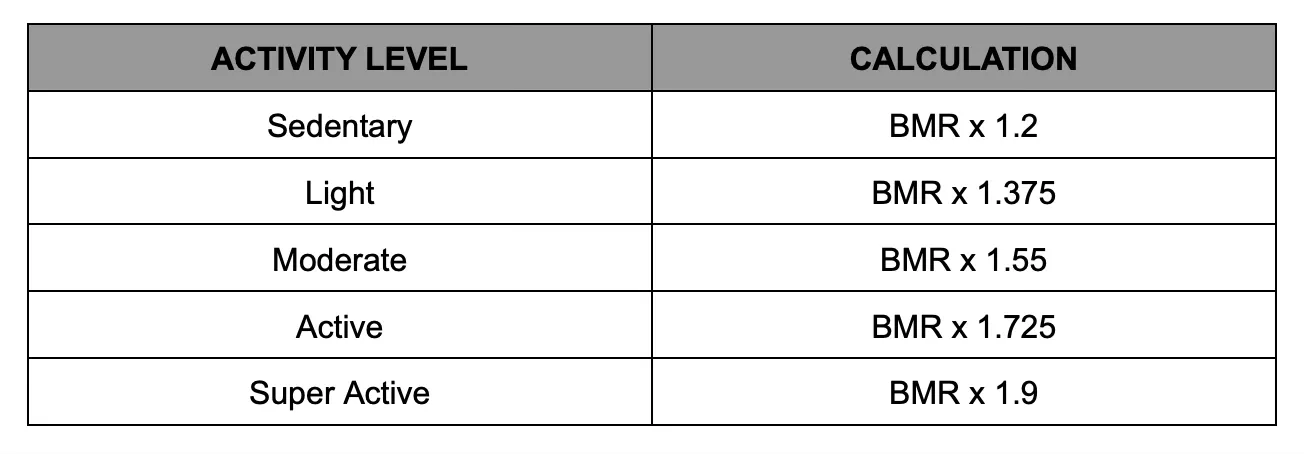Easy 7 Step Process to Calculate Your Macros
Nov 03, 2024As we know, what you consume each day can substantially affect your body composition (bodyweight, weight distribution, fat mass vs. lean mass), physical and mental performance, hormones, sleep and recovery, and your energy level throughout the day.
Knowing your specific macros are important for this reason. Your calculations are unique to you as an individual. This will help you learn what is best for YOUR nutrition based on your personal information such as age, height, current bodyweight, goal bodyweight, lifestyle, activity level, health, fitness and performance goals.
Everything listed above must be taken into consideration when calculating your macros. They make all the difference in the number of calories you expend, which means they affect the amount of calories you should be consuming on a day to day basis.

If you feel like this lady when you hear “calculate macros”…
Follow the easy-to-understand 7 step process below. :)
PS. Although this is a cheat sheet, you will still have to understand basic mathematics. Whip out your calculator now.
Step 1:
CALCULATE YOUR BMR (Basal Metabolic Rate)
Your BMR tells you how many calories your body burns at rest.
Use this equation:
Men: (10 x weight in kg) + (6.25 x height in cm) - (5 x age in years) + 5
Women: (10 x weight in kg) + (6.25 x height in cm) - (5 x age in years) - 161
Note: To get your bodyweight in kilograms, divide weight in pounds by 2.2
Example: 200lb / 2.2 = 90.9kg (round up to 91kg for simplicity purposes)
Step 2:
DETERMINE YOUR ACTIVITY LEVEL (side note: you have to be honest with yourself or this will not work)
Sedentary = Close to zero physical activity (desk job/couch potato) and no intentional exercise
Light = Light activity and light exercise 1-3x per week
Moderate = Moderate activity and moderate exercise 3-5x per week
Active = Very active with intense sports/training 5-6x per week
Super Active = Super active with very intense sports/training and physical work
Step 3:
USE EQUATIONS BELOW TO CALCULATE CALORIES NEEDED PER DAY
Using your BMR (from step 1) and your activity level (from step 2), use the following equations to calculate your calories needed each day:

Step 4:
ADJUST BASED ON PERSONAL GOALS
Lose body fat: Subtract 300-500 calories → weigh 1x per week, if weight does not decrease in 2-3 weeks, drop another 250 calories
Gain mass: Add 300-500 calories → weigh 1x per week, if weight does not increase, increase calories by 250
Maintain: No adjustment needed
Step 5:
USE EQUATION BELOW TO DETERMINE MACRO BREAKDOWN
The results of these equations equal how many calories from each macronutrient you need each day.
Use the number of calories you need each day (from step 3) and multiply by the percentages listed below.

Step 6:
DETERMINE MACROS IN GRAMS
Now that you have calculated how many calories you need from each specific macronutrient, you can figure out how many grams of each you need to aim for each day.
As you know from the blog post:
Protein = 4 calories per gram
Carbohydrate = 4 calories per gram
Fat = 9 calories per gram
This means that you can take the number of calories needed from each specific macronutrient (from step 4) and divide them by the calories per gram.

Finally, the numbers you have in front of you are “your macros.” What you are looking at is the number of GRAMS of each macronutrient you need.
STEP 7: MAKE ADJUSTMENTS BASED ON RESULTS
Follow the plan you came up with for 3-4 weeks, weighing yourself once per week, ideally on the same day and same time of day each time (Ex: every Monday morning at 7AM before breakfast.)
Track your weight on paper or in a note in your phone.
Do you see an upward trend, a downward trend, or no change at all? Always look for TRENDS in the data. There will be ups and downs along the way - this is normal - but you should be able to see a slow downward trend (or upward trend if weight gain is the goal) in your data collected.
If weight loss is your goal, aim for 2-4lbs loss in the first month. If you don’t see this in your data, lower your calories by 250-350 and repeat the process.
If weight gain is your goal, aim for 2-4lbs gain in the first month. If you don’t see this in your data, increase your calories by 250-350 and repeat the process.
Hope this is helpful! If it was and if you would like more information like this, please subscribe to receive my articles.

